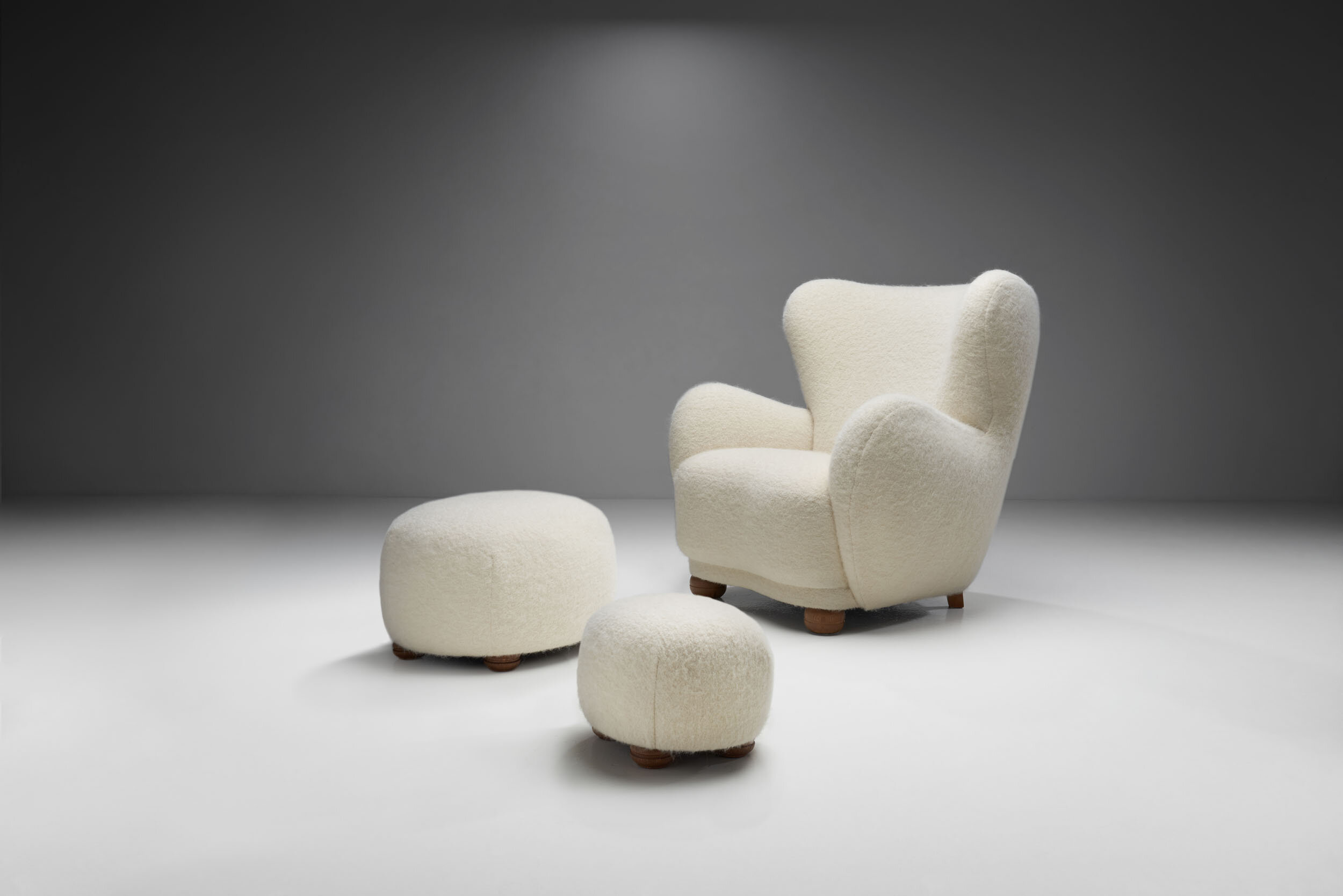Osvaldo Borsani Dining Set for Atelier Borsani Varedo, Italy 1930s (sold)











































Osvaldo Borsani Dining Set for Atelier Borsani Varedo, Italy 1930s (sold)
The 1930s in Italy are also referred to as the 'decade of contradiction'. On the one hand, urban planning, architecture, decoration were all dictated by the rhetoric of the regime. On the other hand, in contrast to the ideological alignment, completely new design languages and determined designers emerged.
It is also the decade in which an idea of industrial design is affirmed, the 'reproducible beauty', which van be seen for example in Gio Ponti's early works. Osvaldo Borsani, still a student at the time, was among those protagonists who looked beyond the present. He was best known for his research-based approach to making furniture. The chairs and table of this dining set were designed by Borsani in the late 1930s, shortly after his graduation from the Politecnico di Milano. These rare models are special for several reasons: firstly, they predate the post-war Tecno era of the designer’s career, therefore they are less about technical features and more about the craftsmanship’s aesthetic quality. Secondly, the sculptural, carved legs are unique even in Borsani’s wide repertoire of furniture. The table’s structure is made of solid walnut, with a rectangular black glass top that can be extended, making this a perfect dining table. The glass complements the sturdy look of the solid wood body, adding a layer of style. It also matches well with the walnut’s colour scheme. The chairs’ structure is also made of solid walnut in spectacular shapes and forms. The back legs are mismatched, which might seem odd, but the long, slightly curved legs complement the sculpted front legs by balancing and highlighting the texture. The unattached backrests are held by the elongated back legs and this detail sections the chairs optically. The stylish light upholstery matches well with the walnut’s colour scheme and lets the wood stand out.
Upon graduating in 1937, Osvaldo Borsani took up work in his father’s workshop. Among his peers, Borsani was regularly called “the American” because of his penchant for innovation. There was always some form of twist in Borsani’s table designs, whether it is the pairing of materials, unusual shapes, or -as in this case – the artisanal quality of the legs. Thanks to this, his designs remain timeless.
SOLD
Condition:
In good vintage condition. Wear consistent with age and use. Some scratches on the glass and wooden legs. The chairs have been reupholstered recently in a premium fabric.
Dimensions:
Table:
78.74 in W x 35.43 in D x 30.31 in H
200 cm W x 90 cm D x 77 cm H
Extended top: 300 cm - 118.11 in
Chairs
19.88 in W x 21.25 in D x 33.07 in H; Seat height 17.91 in
50.5 cm W x 54 cm D x 84 cm H; Seat height 45.5 cm
Literature:
Giampiero Bosoni, Osvaldo Borsani, Architetto, designer, imprenditore, Skira Milan 2018, p. 128.
About the designer:
Osvaldo Borsani was born in Varedo, Italy in 1911. Son of Gaetano, an established furniture maker in his “Atelier di Varedo”. Sixteen-year-old Osvaldo received his first training in the family business.
In 1933, he participated in the fifth Triennale of Milan with the design for the “Minimal House”, which was awarded the silver medal. In the post-war period, after graduation from Polytechnic, he formed friendships with numerous artists like Lucio Fontana, Agenore Fabbri, Aligi Sassu, Roberto Crippa, Fausto Melotti, and Arnaldo Pomodoro, together with whom he realized important works of art in furnishing and interior architecture.
In 1953, along with his brother Fulgenzio, he founded Tecno, the great project for which he worked his whole life in order to develop standard production with reference to that of design. Its name derived from the Greek 'techne' which means both art and technique. Tecno was born: the perfect synthesis between the artisan experience of the atelier and production on a larger scale, which allows for new market horizons and greater capacity for design innovation. Tecno was born in an Italy that has left wars and misery behind it and that wanted to invent a future of serenity and optimism.
His first industrial designs were the P40 adjustable armchair (1953) and the D70 reversible seat sofa. In 1968, it was the office system Graphis (together with Eugenio Gerli and coming into vogue around the world in a million copies) thanks to which Tecno became a world-leading manufacturer in design for the office.
At the end of the sixties, Osvaldo Borsani, together with Marco Fantoni and Valeria Borsani, created the Tecno Designs Centre, which creates new products and secures for the company the supervision of large interior architectural works, the experimentation in new technologies, and the strategies and the tools of business communication. At the same time Borsani opened up the design to collective uses and to the contribution of external designers. Until his death in 1985, Osvaldo Borsani created and cultivated an attitude of mind which encouraged craftsmanship and an attention to detail and quality. ~H.






















